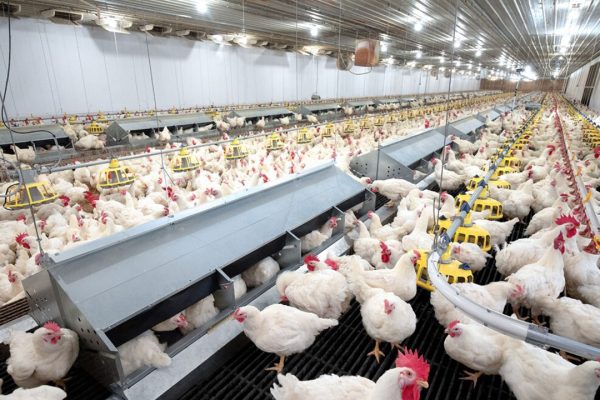
Poultry Industry Poised to Lead Amidst Global Protein Market Challenges
Despite anticipated declines in the pork and beef sectors, the poultry industry is set to emerge as the frontrunner in the global animal protein landscape, which is projected to witness a modest year-on-year growth of 0.4%, as highlighted in a recent Rabobank analysis. Factors such as reduced input costs are anticipated to foster increased chicken consumption in 2024, thereby bolstering the industry’s growth trajectory.
The Rabobank report offers a cautiously optimistic perspective on the global poultry market for 2024, projecting a growth rate ranging between 1.5% to 2%. While this projection is marginally below the long-term average growth rate of 2.5%, it signifies a recovery from the subdued growth of 1.1% observed in 2023. The most pronounced growth is anticipated in regions like Southeast Asia, the Middle East, and Latin America, albeit at levels slightly below the historical averages.
Nan-Dirk Mulder, Senior Analyst of Animal Protein at Rabobank, commented on the industry dynamics, stating, “The challenge lies in aligning supply growth with the modest pace of demand growth, particularly in regions such as the U.S., Thailand, Indonesia, China, and the EU, where oversupply concerns have been prevalent.”
Mulder further emphasized the imperative for market equilibrium, highlighting past instances where oversupply adversely impacted profitability in regions like Brazil, the U.S., and South Africa.
Amidst a backdrop of economic fragility, consumers are anticipated to prioritize affordability, thereby exerting pressure on producers to deliver cost-effective offerings. However, as wage increments align with inflation rates, market opportunities based on value propositions are expected to gain traction.
Nonetheless, the industry is poised to grapple with persistent challenges, encompassing elevated operational costs and potential market volatility influenced by geopolitical events and trade dynamics. While feed costs are projected to witness a marginal decline, external factors such as geopolitical tensions and climatic uncertainties could exert upward pressure on costs.
Furthermore, while global trade dynamics have displayed signs of deceleration post the robust growth witnessed in 2022 and early 2023, gradual recovery is anticipated, particularly in segments like raw chicken meat, driven by improved consumer spending in pivotal markets including the EU, UK, and U.S.
A significant wildcard for the industry’s outlook in 2024 is the escalating threat of avian influenza, which has already begun to impact production and trade across key geographies. Mulder issued a cautionary note, emphasizing the imperative for enhanced biosecurity measures in light of the early outbreak patterns observed in the Northern Hemisphere.
In conclusion, while the poultry industry navigates through a multifaceted landscape characterized by price sensitivity, geopolitical complexities, and health risks, a strategic focus on efficiency, procurement, and biosecurity, coupled with an evolving demand landscape, will be pivotal in shaping its trajectory in 2024.







